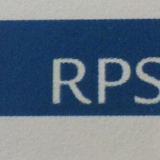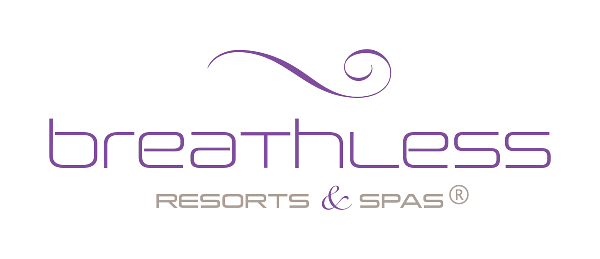Information
-
Document No.
-
Audit Title
-
Client / Site
-
Conducted on
-
Prepared by
-
Location
-
Personnel
Section A: Details of amusement ride and owner:
-
Show:
-
Select date
-
Item Registration Number:
-
Name of Ride:
-
Photo of Amusement Device
-
Legal Entity:
-
Owners Phone Number:
-
ABN:
-
Ride Operator (and phone number):
-
Name of Inspector;
Section B: Logbook & Documents
-
1. Does the ride require design registration? If the answer is 'no' go to Question B3<br><br>Notes-: varies state to state
-
2. If the answer to Question B1 is yes, has the ride been design registered?<br><br>Notes-: If your state does not require design registration for this ride, disregard this question.
-
3. Does the ride require plant item registration? If the answer is 'no' go to Question B5<br>Notes-:
-
4. Does the ride require plant item registration and is it current? <br><br>Notes-:
-
5. What is the date of the last engineer's inspection?
-
6. Does the ride have current public liability insurance?<br><br>Notes:
-
7. Has the ride got any "current notices" that are outstanding?<br>Notes: check log book and National register and Fieldlink. (If the answer is yes, take appropriate action and note details of outstanding notices)
-
8. Is there evidence of a risk assessment (eg completed checklist) on the set up of the ride?<br><br>Notes-: E.g. Emergency planning, overhead power lines, overhanging trees, sloping ground, suitable blocking etc.<br>(Prohibition Notice)
-
9. Have operational procedures been documented and for mobile rides do they include set up and dismantling? <br><br>Notes-: (Improvement Notice)
-
10. Is there evidence of training for staff on the safe use of the amusement device? (For both operator and attendant) <br><br>Notes-: All rides must have a supervisor of 18 years or older.<br>(Improvement Notice)
-
11. Has the device a current log? <br><br>Notes-: A form of recording system, e.g. In hard copy (logbook) or on computer, that includes up to date records of inspections, set ups, maintenance etc.<br>(Improvement Notice)
-
12. Does the log contain records of set ups?<br><br>Notes-: Record of set ups may give an indication of usage level of the ride.
-
13. A - Has the device been repaired or altered Ian way that may affect the health and safety of patrons? <br>Notes-:
-
13. B - If yes - has a competent person verified the repair or alteration? <br><br>Notes-: The nature of the repair or alteration will define required competency.<br>(Prohibition Notice)
-
14. Does the amusement device have a document and up to date maintenance and inspection program?<br><br>Notes-: (Prohibition Notice)
-
15. Select and verify two maintenance items from the maintenance and inspection program. Is there evidence that both selected items from the program have been performed? <br><br>Notes-: Example- if slew ring bolts are to be replaced every 6 months is there an entry in the log book from mechanic or fitter and / or an invoice to verify purchase. <br>(Prohibition Notice)
-
16. Does the log include a list of critical safety mechanical components, the failure of which can result in severe injuries to the rider or other people adjacent to the device? <br><br>Notes-: This is obtained from the manufacturer in the first instance, if not in existence then the professional engineering must produce (part of maintenance and inspection program). In instances where this is not required (smaller less dynamic rides) an engineer should declare this in the log.<br>(Prohibition Notice)<br>
-
17. Is non destructive testing (NDT) called for in the maintenance and inspection program? If 'no' proceed to Question B19<br><br>Notes-:
-
18. Select and verify two critical items of the NDT program. Do the test reports show that the NDT has been undertaken using the specified method and that the result is positive? There may have been evidence of repair/replacement and if so, does the repeat NDT show at repair has been satisfactorily completed?<br><br>Notes-: Example, report from NDT testing authority, entry I log book by NDT tester.<br>(Prohibition Notice)<br>
-
19. Is the ride required to have patron restraints? If no, proceed to Question B21<br><br>Notes-: Stated in operating procedures.
-
20. A- Has a competent person verified the design and construction of the restraint system since 2005?<br><br>Notes-: Documentary evidence of this will be required from June 2009.<br>(Prohibition Notice)
-
20. B- Has a competent person verified the design and construction of any "modified" restraint system?<br><br>Notes-: <br>(Prohibition Notice)
-
21. Is there a copy of a single line circuit diagram for the low voltage feeds within the amusement device?<br><br>Notes-: Low voltage is between 50v and 1000v AC (or 120 to 1500 dc). Control circuits are usually less than this.<br>(Improvement Notice)
-
22. Has a competent person signed off on the electrical safety aft the device has been erected on the site? (if required)<br><br>Notes-: QLD requirement.
-
23. Is a 30mA RCD fitted to protect socket outlets on the ride for "plug in" electrical equipment (rated below 20 amps)?<br><br>Notes-: Existence of the RCD may be checked on the single line circuit diagram or left for physical inspection of the ride. <br>(Prohibition Notice)
Section C :- Site Issues - General
-
1. Have emergency evacuation of the ride and access/egress of emergency vehicles and equipment been provided for ?<br><br>Notes-: Depending on the circumstances the Notice may be issued on the show organiser (space allocator) or the ride operator <br>(Improvement Notice)
-
2. Have you (the inspector) conducted a visual inspection for any obvious defects?<br>If no inspection indicate 'no'<br>If yes, comment on extent of inspection and list defects found and enforce accordingly (e.g. Issue prohibition notice if immediate risk is evident)<br><br>Notes-: Such as any missing bolts; R clips or pins; cracks; structural rust; damaged members; misaligned rails or tracks; inadequate packing; inadequate tie downs; insufficient / unsuitable fire extinguishers; access/egress<br>(Prohibition Notice)
-
3. A - Has a suitable fence or temporary fence or temporary barrier been erected around the amusement device? <br><br>(Note: for some very low risk rides a fence may not be required) <br>Notes-: AS 3522.2 A ride shall be provided with fences, handrails, guards etc as may be necessary to confine operating staff and patrons and riders within the boundaries of the ride to safe areas; ensure the safety persons (including those queuing for the ride) and operating staff within the vicinity of the ride. <br>(Prohibition Notice)
-
3. B - Can the public reach over or through the fence to gain access to any moving parts of the amusement device or can gain access to moving parts, barriers or spectators while on the moving ride.<br> <br>Notes-: AS 3522.2 A ride shall be provided with fences, handrails, guards etc as may be necessary to confine operating staff and patrons and riders within the boundaries of the ride to safe areas; ensure the safety persons (including those queuing for the ride) and operating staff within the vicinity of the ride. <br>(Prohibition Notice)
-
4. Is suitable access and egress for patrons and staff provided?<br><br>Notes-: <br>(Improvement Notice)
-
5. is the ride required to have patron restraints? if no proceed to Question C7<br><br>Notes-:
-
6. With the rider restraint system in place, is it possible for a rider to be ejected and sustain severe injuries because of:<br>1 sudden or unexpected movement of the amusement device or<br>2 patron placing themselves in an unsafe position or<br>3 behaviour of the patron e.g. Releasing restraint system<br><br>Notes-: <br>(Prohibition Notice)
-
7. A- Are loading / patron seating restrictions and procedures required for this ride?<br><br>Notes-: Check for signage of height, age or weight restrictions, loading charts etc.<br>
-
7. B- If the answer to 7A is yes, have the restrictions and procedures been implemented?<br><br>Notes-: Check they are being followed.<br>(Prohibition Notice)
Section C Site Issues - Electrical
-
8. Is the 30mA RCD fitted to protect socket outletts on the ride for 'plug in' electrical equipment (rated below 20 amps)?<br><br>Notes-: If not already checked on the single line circuit diagram ( refer to Question B23)<br>(Prohibition Notice)
-
9. Are display and festoon lighting and other electrical cables secured and located to avoid tripping hazards and damage to cable?<br><br>Notes-: Visual inspection by Inspector<br>(Prohibition Notice)
-
10. For amusement device requiring emergency lighting and illuminated exit signs, such as enclosed devices or those running through enclosed areas, are they provided?<br><br>Notes-: For ghost trains and other devices requiring darkness during operation, the exit signs may be such that they illuminate if power fails. <br>(Prohibition Notice)
-
11. Have all extension leads utilised to feed, and used within, the ride and plug in electrical equipment been tested within the period stipulated in the legislation of the state (e.g. 6 moths in QLD. Mobile ride use would constitute "hostile" in NSW so 6 months also) <br><br>Notes-: If there is obvious physical damage to electrical equipment - issue (P), if not tagged - verify testing via log book entries cross checked to each item<br>(Improvement Notice)
Section C :- Site Issues - Noise
-
12. Is the ride, or accompanying music loud enough to warrant monitoring? It no this section is complete<br><br>Notes-: Eg Can you carry on a conversation without yelling?<br>
-
13. Has noise monitoring been undertaken for the ride and any accompanying sound system?<br><br>Notes-: The owner must organise for noise monitoring to verify the the noise level is within acceptable limits.<br>(Improvement Notice)
-
14. Does the monitoring report indicate that the noise exposure limits under the legislation of the workers has been exceeded?<br><br>Notes-: <br>
-
15. If the answer to 14 is yes, have the appropriate control measures been implemented?<br><br>Notes-: (This is to ensure that the (in ear) exposure of these workers does not exceed the exposure limits) <br>(Improvement Notice)
-
Comments:










